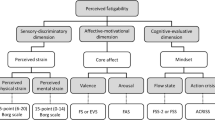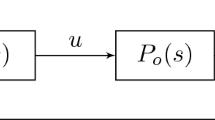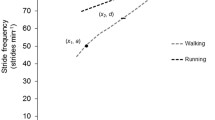Abstract
Describing the dynamical nature of happiness is crucial for understanding why individuals are constantly running on a hedonic treadmill around set levels of well-being. Based on the self-centeredness branch of the ’self-centeredness/selflessness happiness model’, we present a dynamical model that focuses on unfolding the hedonic dimension of happiness dynamics through the use of the approach–avoidance framework. This numerical model enables us to understand and analyze emerging hedonic cycles caused by hedonic motivation and hedonic adaptation. In particular, hedonic motivation leads people to experience hedonic activities, which result in successes or failures and experiences of pleasure and afflictive affects; whereas hedonic adaptation causes individuals to return to a baseline level of pleasure and afflictive affects, more quickly for the former than the latter. The proposed dynamical model is based on the approach–avoidance framework that considers human behavior in two separate regulatory processes that contribute to homeostasis of individuals’ happiness. We analyze these two processes independently and conjointly in order to highlight their effect on happiness levels. The analysis shows how individual characteristics and their combination may result in hedonic cycles, afflictive affects, (dis-)pleasure, and particular happiness dynamics. We also discuss how such a numerical model enables us to perform a multifactorial analysis which is hardly feasible outside the context of a simulation and how it may help us to narrow and design relevant experimental surveys from these preliminary numerical results.





















Similar content being viewed by others
Data Availability
The code for generating the simulations can be downloaded at https://github.com/jdmathias/happiness.
References
Argyle, M. (1999). Causes and correlates of happiness (pp. 353–373). Russell Sage Foundation.
Arnold, M. B. (1970). Chapter 12–perennial problems in the field of emotion. Feelings and emotions: The Loyola symposium.
Bandura A (1969) Principles of behavior modification. New York 1
Baumeister, R. F., Bratslavsky, E., Finkenauer, C., et al. (2001). Bad is stronger than good. Review of General Psychology, 5(4), 323–370.
Bornstein, M. H., Davidson, L., Keyes, C. L., et al. (2003). Well-being: Positive development across the life course. Psychology Press.
Brickman, P., & Campbell, D. (1971). Hedonic relativism and planning the good society (pp. 287–302). Academic Press.
Brickman, P., Coates, D., & Janoff-Bulman, R. (1978). Lottery winners and accident victims: Is happiness relative? Journal of Personality and Social Psychology, 36(8), 917.
Brown, N. J. L., & Rohrer, J. M. (2020). Easy as (happiness) pie? A critical evaluation of a popular model of the determinants of well-being. Journal of Happiness Studies, 21(4), 1285–1301. https://doi.org/10.1007/s10902-019-00128-4
Carrero, G., Makin, J., & Malinowski, P. (2022). A mathematical model for the dynamics of happiness. Mathematical Biosciences and Engineering, 19(2), 2002–2029. https://doi.org/10.3934/mbe.2022094
Cloutier, S., Angilletta, M., Mathias, J. D., et al. (2020). Informing the sustainable pursuit of happiness. Sustainability, 12(22), 9491.
Crisp, R. (2021). Well-being. In E. N. Zalta (Ed.), The Stanford encyclopedia of philosophy (Winter). Metaphysics Research Lab, Stanford University.
Dambrun, M. (2017). Self-centeredness and selflessness: Happiness correlates and mediating psychological processes. PeerJ, 5, e3306.
Dambrun, M., & Ricard, M. (2011). Self-centeredness and selflessness: A theory of self-based psychological functioning and its consequences for happiness. Review of General Psychology, 15(2), 138–157. https://doi.org/10.1037/a0023059
Delle Fave, A., Brdar, I., Freire, T., et al. (2011). The Eudaimonic and hedonic components of happiness: Qualitative and quantitative findings. Social Indicators Research, 100, 185–207.
Delle Fave, A., Brdar, I., Wissing, M. P., et al. (2016). Lay definitions of happiness across nations: The primacy of inner harmony and relational connectedness. Frontiers in Psychology. https://doi.org/10.3389/fpsyg.2016.00030
Diener, E., Lucas, R. E., Oishi, S., et al. (2002). Subjective well-being: The science of happiness and life satisfaction. Handbook of Positive Psychology, 2, 63–73.
Diener, E., Lucas, R. E., & Scollon, C. N. (2009). Beyond the hedonic treadmill: Revising the adaptation theory of well-being (pp. 103–118). Springer. https://doi.org/10.1007/978-90-481-2350-65
Dymond, S. (2019). Overcoming avoidance in anxiety disorders: The contributions of Pavlovian and operant avoidance extinction methods. Neuroscience & Biobehavioral Reviews, 98, 61–70.
Easterlin, R. A. (1974). Does economic growth improve the human lot? Some empirical evidence. In P. A. David & M. W. Reder (Eds.), Nations and households in economic growth (pp. 89–125). Academic Press. https://doi.org/10.1016/B978-0-12-205050-3.50008-7
Ekman, P., Davidson, R. J., Ricard, M., et al. (2005). Buddhist and psychological perspectives on emotions and well-being. Current Directions in Psychological Science, 14(2), 59–63. https://doi.org/10.1111/j.0963-7214.2005.00335.x
Elliot, A. J. (2006). He hierarchical model of approach-avoidance motivation. Motivation and Emotion, 30(2), 111–116. https://doi.org/10.1007/s11031-006-9028-7
Frawley, A. (2015). Happiness research: A review of critiques. Sociology Compass, 9(1), 62–77.
Frederick, S., & Loewenstein, G. (1999). Chedonic adaptation (pp. 302–329). Russell Sage Foundation.
Frey, B. S., & Stutzer, A. (2002). What can economists learn from happiness research? Journal of Economic literature, 40(2), 402–435.
Guest, O., & Martin, A. E. (2021). How computational modeling can force theory building in psychological science. Perspectives on Psychological Science, 16(4), 789–802. https://doi.org/10.1177/1745691620970585
Harmon-Jones, E., Harmon-Jones, C., & Price, T. F. (2013). What is approach motivation? Emotion Review, 5(3), 291–295.
Haworth, C., Nelson-Coffey, S., Layous, K., et al. (2016). Stability and change in genetic and environmental influences on well-being in response to an intervention. PloS One, 11, e0155538. https://doi.org/10.1371/journal.pone.0155538
Higgins, E. T. (1997). Beyond pleasure and pain. American Psychologist, 52(12), 1280.
Huta V (2016) Eudaimonic and hedonic orientations: Theoretical considerations and research findings. Handbook of Eudaimonic well-being pp. 215–231
Jayawickreme, E., Forgeard, M. J. C., & Seligman, M. E. P. (2012). The engine of well-being. Review of General Psychology, 16(4), 327–342. https://doi.org/10.1037/a0027990
Kauppi, K., Vanhala, A., Roos, E., et al. (2023). Assessing the structures and domains of wellness models: A systematic review. International Journal of Wellbeing, 13, 1–19. https://doi.org/10.5502/ijw.v13i2.2619
Keyes, C. L. (2002). The mental health continuum: From languishing to flourishing in life. Journal of Health and Social Research, 43, 207–222. https://doi.org/10.2307/3090197
Kjell, O. N. E., & Diener, E. (2020). Abbreviated three-item versions of the satisfaction with life scale and the harmony in life scale yield as strong psychometric properties as the original scales. Journal of Personality Assessment. https://doi.org/10.1080/00223891.2020.1737093
Kjell, O. N. E., Daukantaité, D., Hefferon, K., et al. (2016). The harmony in life scale complements the satisfaction with life scale: Expanding the conceptualization of the cognitive component of subjective well-being. Social Indicators Research, 126, 893–919. https://doi.org/10.1007/s11205-015-0903-z
Lang PJ, Bradley MM (2008) Cortex-reflex connections appetitive and defensive motivation is the substrate of emotion. Handbook of approach and avoidance motivation p. 51
de Lima, I. V., Abou-Zeid, M., Kutadinata, R., et al. (2018). Dynamic modeling of activity happiness: An investigation of the intra-activity hedonic treadmill (pp. 95–118). Belrin: Springer. https://doi.org/10.1007/978-3-319-76623-26
Linton, M. J., Dieppe, P., & Medina-Lara, A. (2016). Review of 99 self-report measures for assessing well-being in adults: Exploring dimensions of well-being and developments over time. BMJ Open, 6(7), e010641.
Lyubomirsky, S., Sheldon, K. M., & Schkade, D. (2005). Pursuing happiness: The architecture of sustainable change. Review of General Psychology, 9(2), 111–131. https://doi.org/10.1037/1089-2680.9.2.111
Marken, R. S., & Horth, B. (2011). When causality does not imply correlation: More spadework at the foundations of scientific psychology. Psychological Reports, 108(3), 943–954.
Miller, T. Q., Smith, T. W., Turner, C. W., et al. (1996). A meta-analytic review of research on hostility and physical health. Psychological Bulletin, 119(2), 322.
Pellerin N, Raufaste E, Dambrun M (2020) Selflessness and happiness in everyday life. Journal of Individual Differences
Pellerin, N., Dambrun, M., & Raufaste, E. (2022). Selflessness meets higher and more stable happiness: An experience sampling study of the joint dynamics of selflessness and happiness. Journal of Happiness Studies. https://doi.org/10.1007/s10902-022-00503-8
Peyrot, M. (1996). Causal analysis: Theory and application. Journal of Pediatric Psychology, 21(1), 3–24.
Powdthavee N (2007) Economics of happiness: A review of literature and applications. Southeast Asian Journal of Economics pp. 51–73
Raibley, J. R. (2012). Happiness is not well-being. Journal of Happiness Studies, 13, 1105–1129. https://doi.org/10.1007/s10902-011-9309-z
Ryan, R. M., & Deci, E. L. (2001). On happiness and human potentials: A review of research on hedonic and Eudaimonic well-being. Annual Review of Psychology, 52(1), 141–166.
Ryff, C. D., & Singer, B. H. (2008). Know thyself and become what you are: A Eudaimonic approach to psychological well-being. Journal of Happiness Studies, 9, 13–39.
Samavati S, Ranjbar E (2017) The effect of physical stimuli on citizens’ happiness in urban environments: The case of the pedestrian area of the historical part of Tehran. Journal of Urban Design and Mental Health 2
Seligman, M. E. (2011). Flourish: A visionary new understanding of happiness and well-being. Simon & Schuster.
Sheldon, K. M., Ryan, R., & Reis, H. T. (1996). What makes for a good day? Competence and autonomy in the day and in the person. Personality and Social Psychology Bulletin, 22(12), 1270–1279.
Sprott, J. C. (2005). Dynamical models of happiness. Nonlinear Dynamics, Psychology, and Life Sciences, 9(1), 23–36.
Steiner, J. E., Glaser, D., Hawilo, M. E., et al. (2001). Comparative expression of hedonic impact: Affective reactions to taste by human infants and other primates. Neuroscience & Biobehavioral Reviews, 25(1), 53–74.
Stutzer, A. (2004). The role of income aspirations in individual happiness. Journal of Economic Behavior & Organization, 54(1), 89–109.
Tatarkiewicz, W. (1966). Happiness and time. Philosophy and Phenomenological Research, 27, 1–10.
Veenhoven, R. (2012). Happiness: Also Known as “life satisfaction’’ and “subjective well-being’’ (pp. 63–77). Springer. https://doi.org/10.1007/978-94-007-2421-13
Wallace, B. A., & Shapiro, S. L. (2006). Mental balance and well-being: Building bridges between Buddhism and western psychology. American Psychologist, 61(7), 690.
Wang, M., Zhou, L., & Zhang, Z. (2016). Dynamic modeling. Annual Review of Organizational Psychology and Organizational Behavior, 3, 241–266.
Zheng, X., Men, J., Yang, F., et al. (2019). Understanding impulse buying in mobile commerce: An investigation into hedonic and utilitarian browsing. International Journal of Information Management, 48, 151–160.
Funding
The study was funded by the French National Research Agency (project VIRGO, ANR-16-CE03-0003-01 grant) and the Athabasca University AVPR-SRO fund
Author information
Authors and Affiliations
Corresponding author
Ethics declarations
Conflict of interest
The authors certify that there is no Conflict of interest with any individual/organization for the present work. The authors have no Conflict of interest to declare that are relevant to the content of this article.
Additional information
Publisher's Note
Springer Nature remains neutral with regard to jurisdictional claims in published maps and institutional affiliations.
Appendices
Appendix A Proof of Eqs. (4) and (5)
We start by rewriting Eqs. (2) and (3),
and noticing that isolating the last term of these sums leads to the following equations
Taking out \(e^{-\gamma _P}\) and \(e^{-\gamma _A}\) as common factors of the summation terms in Eqs. (A1) and (A2), respectively, we obtain
Note that the factorization required to add \(e^{\gamma _P}\) and \(e^{\gamma _A}\) in the summation terms, which correspond, respectively, to \(P(t-1)\) and \(A(t-1)\). Thus, we can rewrite Eqs. (A3) and (A4) as
which are precisely Eqs. (4) and (5).
Appendix B: List of Variables and Parameters of the Model
The list and description of variables and parameters of the model is reported in Table 2. Note that the third column contains both variables and parameters, and the fourth column contains their value ranges and/or the values used for the numerical simulations.
Rights and permissions
Springer Nature or its licensor (e.g. a society or other partner) holds exclusive rights to this article under a publishing agreement with the author(s) or other rightsholder(s); author self-archiving of the accepted manuscript version of this article is solely governed by the terms of such publishing agreement and applicable law.
About this article
Cite this article
Mathias, JD., Pellerin, N., Carrero, G. et al. Running on the Hedonic Treadmill: A Dynamical Model of Happiness Based on an Approach–Avoidance Framework. J Happiness Stud 25, 58 (2024). https://doi.org/10.1007/s10902-024-00766-3
Accepted:
Published:
DOI: https://doi.org/10.1007/s10902-024-00766-3




